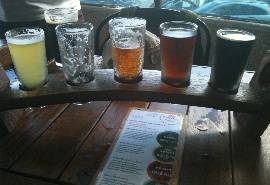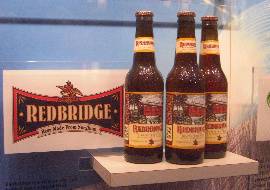 Using the process of fermentation to create alcohol has been traced back to Sumerians (3500 B.C.), Egyptians, and pre-historic Europe. Fermentation is important enough for the History Channel to cover distilleries and beer brewing. Here are seven things you may not have known about the fermentation process:
Using the process of fermentation to create alcohol has been traced back to Sumerians (3500 B.C.), Egyptians, and pre-historic Europe. Fermentation is important enough for the History Channel to cover distilleries and beer brewing. Here are seven things you may not have known about the fermentation process:
- Fermentation is a cellular process by which energy (sugar) is transformed by a cell, yeast in beer, into ethyl alcohol and carbon dioxide. Who knew yeast waste could be so tasty?
- Hops are actually the flower from a plant closely related to cannabis. Where hops are grown, the variety of hop determines the flavor. In the U.S., Cascade hops are the most widely used variety in brewing and are known for their distinct citrus flavor. Caveat: If you have pets and want to homebrew, be careful with your hops because they can make your animals sick.
- Fermentation stops when all the available sugar is used or the amount of alcohol produced becomes toxic to the yeast. Different strains of yeast can tolerate different amounts of alcohol. Scientists are breeding and genetically engineering yeasts to have a higher tolerance for their own waste product (alcohol) and pathogen resistance.
- It was illegal to brew beer at home until Jimmy Carter signed a bill letting the homebrewers free in 1978. That would have definitely made the Whitehouse’s beer recipes less popular.
- The difference between ale and lager is partially due to the temperature maintained during fermentation and the type of yeast used in fermentation. Ales are fermented at 68˚F and lagers are fermented at 48˚F. Budweiser is the Midwest’s most famous lager.
- In downtown Champaign this weekend you may choose to imbibe a microbrew. The term “microbrew” originated in England in the ‘70s to describe neighborhood pub produced beers. Microbrews, by definition, produce a “limited” amount of beer and cannot be significantly owned/supported by large breweries. Downtown Champaign sports its own young microbreweries: the Blind Pig Brewery, which experiments extensively with different flavors of beer such as Samburro Chili Beer on tap now and a watermelon beer featured a few weeks ago; and Distihl, that actually brews in Bloomington, IL, but has a restaurant/taproom in Champaign as well. Successful microbrews, such as Goose Island and Sam Adams, are now craft breweries.
-
 The Anheuser-Busch brewery in St. Louis, MO makes 12% of the total volume of beer produced worldwide annually. The company itself holds 47.6% of all US sales, most of which come from its flagship beers in the Budweiser family. You may not have known that they also bottle Redbridge, a gluten free beer made from Sorghum (a grass) instead of barley (also a grass).
The Anheuser-Busch brewery in St. Louis, MO makes 12% of the total volume of beer produced worldwide annually. The company itself holds 47.6% of all US sales, most of which come from its flagship beers in the Budweiser family. You may not have known that they also bottle Redbridge, a gluten free beer made from Sorghum (a grass) instead of barley (also a grass).
Acknowledgements: Thanks to Jenne Han for this weeks post idea and proofreading; many thanks to the 4 Pines brewery in Manly, Australia for making a killer flight (intro image).









 The Anheuser-Busch brewery in St. Louis, MO makes 12% of the total volume of beer produced worldwide annually. The company itself holds
The Anheuser-Busch brewery in St. Louis, MO makes 12% of the total volume of beer produced worldwide annually. The company itself holds